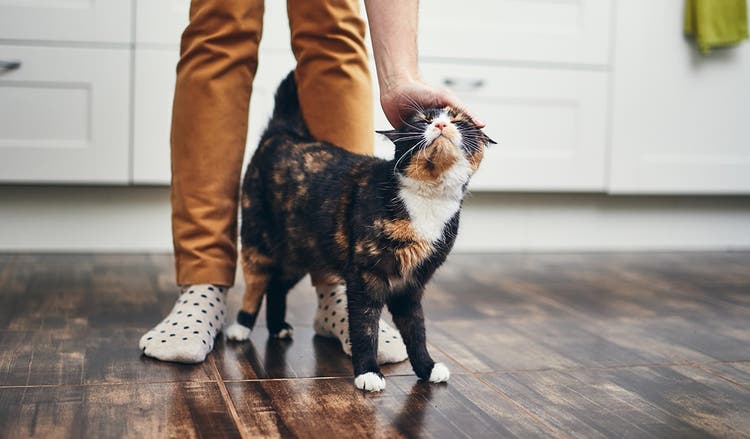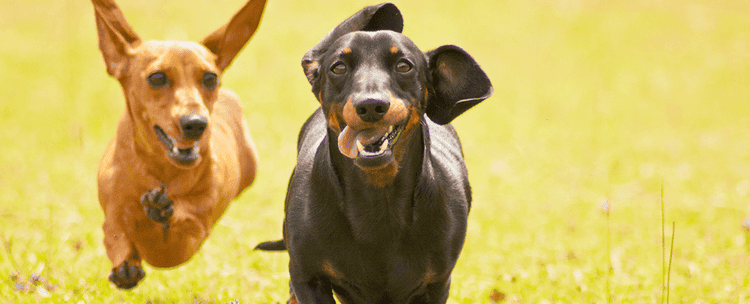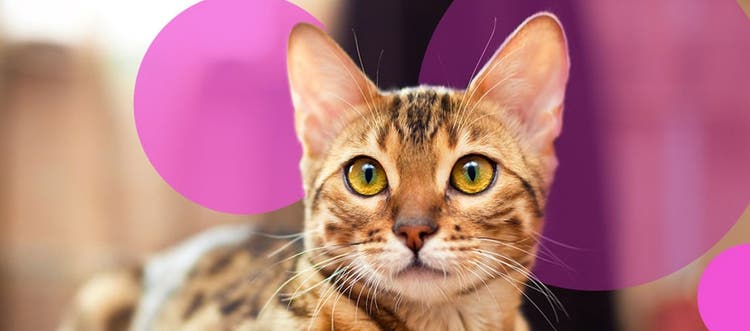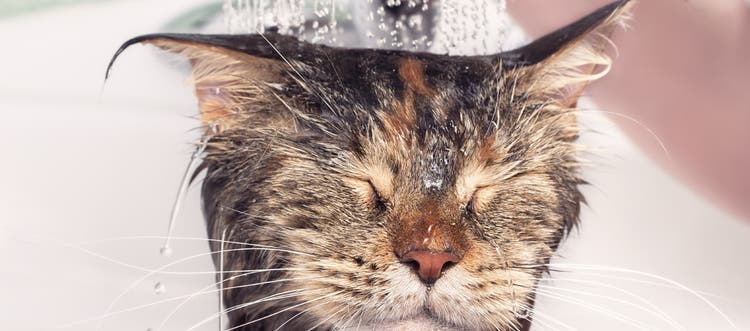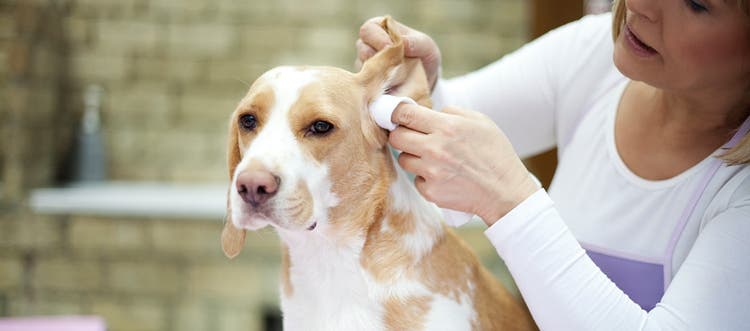Discover several dog and cat breeds that won’t leave their hair (or dander) everywhere.
Over the last 60 years, pet allergies have become more common — and that can leave animal lovers feeling stuck between dealing with itchy eyes and runny noses or living their lives without four-legged friends.
While there is no such thing as a hypoallergenic dog or cat, there are several breeds of dogs and cats that don’t shed their coats as much as others. These breeds could make the perfect pet for an allergy sufferer — or someone who simply doesn’t want to spend their free time sweeping up pet hair.
Which Mixed Breeds Shed Less?
Let’s start with the popular low-shed or no-shed cross breeds:
- Goldendoodles
- Labradoodles
- Schnoodles
- Cockapoos
- Bernadoodles
These breeds are all part-poodle, which is why they’re considered low-shed or dogs that don’t shed, depending on the generation. First-generation breeds may shed a bit, but the risk of shedding decreases significantly from generation to generation.
The benefits of mixed breeds don’t end at less shedding. Some studies show that adult mixed-breed dogs (and cats) are generally healthier and live longer than purebred breeds, with a lower risk of inherited genetic diseases. Plus, if you’re looking to adopt, shelters and animal rescues tend to have more mixed-breed dogs and cats to choose from than purebred pets.
Five More Dogs That Don’t Shed
Big dogs, small dogs, short dogs, tall dogs — there are five breeds with unique temperaments and traits, and one thing in common: no shedding.
Bichon Frise
Gentle mannered, cheerful and playful, these non-shedding dogs range in size from 12 to 18 pounds and love being a member of the family. However, this breed can be a bit high maintenance in terms of grooming. Adult bichons have a double coat, which means they have both soft hairs and coarser guard hairs. Though they don’t shed, these pups must be brushed at least once a day to prevent matting.
Miniature Schnauzer
Like the bichon frise, this breed does best when living as part of a family. Smart, loyal and loving, mini schnauzers easily adapt to changes in weather conditions or climate. Quick to learn and obedient, a fenced yard and on-leash daily walks are recommended. Plan to groom their double coats every five to eight weeks. Males can weigh anywhere from 11 to 18 pounds, while females are slightly smaller at 10 to 15 pounds.
Lagotto Romagnolo
This working breed is active, attentive and eager to please. Renowned in Italy as water-retrievers and truffle hunters, they need mental stimulation and physical exercise. These dogs do best with active, committed owners who, in turn, will be rewarded with an affectionate companion. Typically small to medium sized, males weigh around 28.5 to 35 pounds and females around 24 to 31 pounds. Their curly double coats, which are waterproof, look best when kept 1 to 1.5 inches long.
Soft-coated Wheaten Terrier
This breed is intelligent, lively and affectionate, and owners need to give these dogs a great deal of time and attention — and consistent discipline. Their coats do tend to attract dirt and snow, and wheaten terriers need daily brushing and combing. These pups do well with well-behaved children and are medium sized, with males ranging from 35 to 40 pounds and females weighing in at 30 to 35 pounds.
Portuguese Water Dog
Highly intelligent, Portuguese water dogs are obedient and often seek to please their owners. Originally working dogs, they don’t tire easily and require lots of exercise each day. They also require a fair amount of grooming and need their curly coats brushed and combed on a weekly basis. Because Portuguese water dogs don’t like being alone, they make very loyal, affectionate companions. Males weigh anywhere from 42 to 60 pounds, and females weigh 35 to 50 pounds.
Five Cats That Don’t Shed
While there are no scientifically proven hypoallergenic cats, these cat breeds are your best bet if you’re looking for a feline friend that doesn’t shed much — or produce too much dander, which is actually worse for allergy sufferers than hair.
Russian Blue
Though this breed may be shy around strangers, the Russian blue is affectionate with the ones they love. Intelligent and oh-so-playful, they love fetching and fit in perfectly with most households. These medium-sized cats weigh between 8 and 15 pounds and require minimal grooming despite their plush double coat.
Siberian
Like the Russian blue, Siberian cats fit in well with most families, getting along with children, dogs and other animals. They are naturally calm, quiet and easygoing cats that want to be near their owners. Medium to large in size, males can weigh up to 15–20 pounds and females up to 10–15 pounds. Their luxurious triple coat will be thickest in the winter and shortest in the summer. While this breed will shed as the weather gets warmer, they produce less dander, which is good news for allergy sufferers.
Sphynx
Energetic and mischievous, these cats love to show off for their loved ones and can get along with dogs and other cats. Although not completely hairless, they lack enough hair to absorb body oils, so these cats need regular bathing and ear and nail cleaning to stay healthy. This breed typically weighs 6 to 12 pounds.
Siamese
This highly communicative breed has a short, fine coat that requires only weekly combing. Inquisitive and intelligent, these cats love people and want to be wherever their loved ones are. However, they should be supervised with small children and other animals. The weight range for this type of cat is between 8 and 15 pounds.
Bengal
This breed is active, athletic and always curious — remaining energetic well into their senior years. They often like to play and learn tricks from their owners and are good for a family with other pets as long as they’re properly introduced. However, they are larger than the average house cat, with males weighing 10 to 15 pounds and females weighing 8 to 12 pounds. Their close-lying coat is luxuriously soft and requires little grooming.
Even if you suffer from allergies (or would rather not spend every free moment trying to rid your home of pet hair), that doesn’t mean you have to give up the possibility of a pet; you just have to find the right fit for you and your family. This guide is a great start — reading more about breeds of dogs and cats that shed less from resources like American Kennel Club’s Dog Breed list and The Spruce Pet’s Guide to Cat Breeds can help you choose the perfect pet for your family.

Seresto® Flea & Tick Collar for Dogs
An easy-to-use, odorless, non-greasy collar that kills and repels fleas and ticks for 8 continuous months.

Seresto® Flea & Tick Collar for Cats
An easy-to-use, odorless, non-greasy collar that kills and repels fleas and ticks for 8 continuous months.
Related Articles

Puppy Parenting: Our Downloadable Guide
New puppy? Whether this is your first go-round or your fifth, we know that so much goes in to raising healthy, happy pups. Check out our free guide, also available to download!

New Cat or Kitten: Our Downloadable Guide
Thinking about adding a feline to the family? There are so many emotional, social and physical benefits to owning a cat. Check out our free guide, also available to download!



